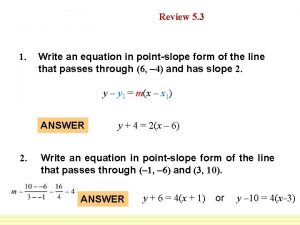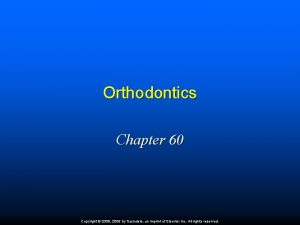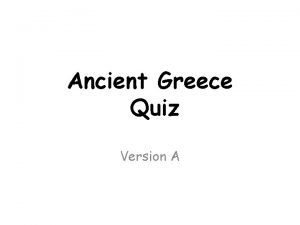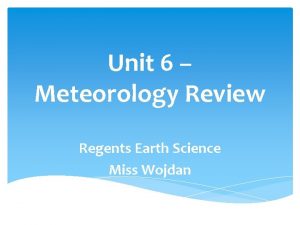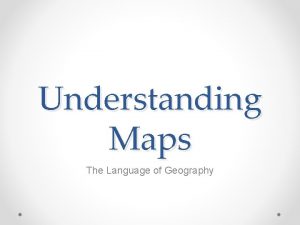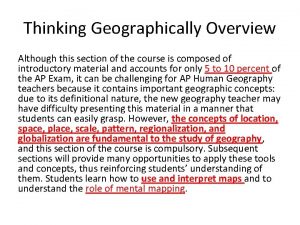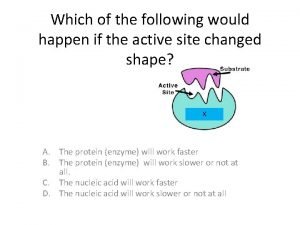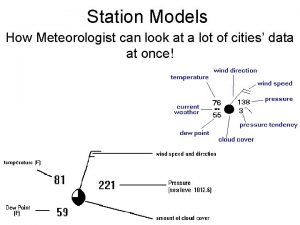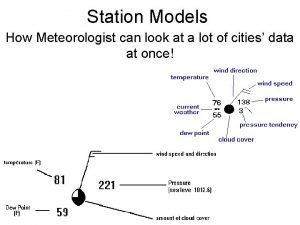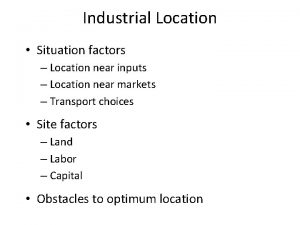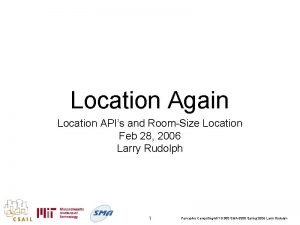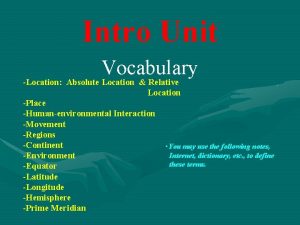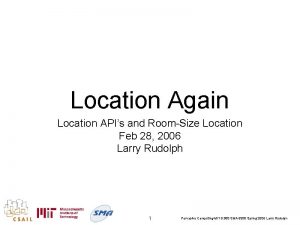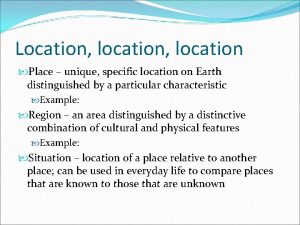REVIEW QUIZ 1 At which location would a




































- Slides: 36

REVIEW QUIZ #1. At which location would a glacier most likely form? 1. 15° N. latitude at an elevation of 4, 000 m. 2. 30° N. latitude at an elevation of 3, 000 m. 3. 45° N. latitude at an elevation of 1, 000 m. 4. 0° latitude at an elevation of 6, 000 m.

Name the Glacial Feature #2

#3 Name the Glacial Feature

#4

#5 Name the Glacial Feature

#6 Name the Glacial Feature

#7

#8 Name this glacial deposit

#9 Name these glacial features

#10

#11 What are these scratches called?

#12 Describe a glacial valley

#13

#14 What are these called?

#15 Name this glacial feature

#16

#17 What is this glacial deposit called?

#18 What is this glacial deposit called?

#19

#20 Based on evidence in the photo, is this glacier advancing or retreating?

#21 Name the two places where ice sheets exist today.

#22 Name three specific locations where we would find valley glaciers today.

#23. Name the coastal feature shown in the picture below

#24. Name the coastal feature shown in the picture below

#25. Name the coastal feature shown in the picture below.

#26. The cyclic rise and fall of ocean tides on Earth is primarily caused by Earth’s rotation and the 1) Gravitational attraction of the Moon and the Sun 2) Temperature differences in ocean currents 3) Revolution of Earth around the Sun 4) Direction of Earth’s planetary winds

#27. Name the coastal feature shown in the pictures below

#28. When the Earth, Sun and Moon are in the position shown below, which type of tide would occur?

#29. A student recorded the times of three successive high tides at one location as: 9: 12 a. m. 9: 38 p. m. 10: 04 a. m. What is the approximate time of the next high tide? (1) 10: 12 p. m. (3) 10: 38 p. m. (2) 10: 30 p. m. (4) 11: 04 p. m.

#30. Name the coastal feature shown in the picture below

#31.

#32. During which 2 moon phases does a NEAP TIDE occur?

#33. Name the coastal feature shown in the picture below

#34. Explain why ocean tides are considered to be cyclic.

#35. Explain how longshore currents carry sediment along a beach.

BONUS: HOW MANY GLACIAL FEATURES CAN YOU NAME IN THIS PHOTO?
 I would like to prefer
I would like to prefer Base form
Base form A cross country skier moves from location a to location b
A cross country skier moves from location a to location b Location planning management
Location planning management If past perfect
If past perfect Would sooner
Would sooner Example of a deductive argument
Example of a deductive argument Deductive vs inductive geometry
Deductive vs inductive geometry Geometry review quiz 5
Geometry review quiz 5 Writing equations of lines review for quiz answer key
Writing equations of lines review for quiz answer key Chapter review motion part a vocabulary review answer key
Chapter review motion part a vocabulary review answer key Uncontrollable spending ap gov
Uncontrollable spending ap gov Narrative review vs systematic review
Narrative review vs systematic review What is inclusion and exclusion
What is inclusion and exclusion Narrative review vs systematic review
Narrative review vs systematic review Headgear tubes are routinely placed in which location
Headgear tubes are routinely placed in which location Which location
Which location The story takes place in
The story takes place in Which location is the flattest part of the ocean
Which location is the flattest part of the ocean Which location
Which location Which number represents the location of ancient athens
Which number represents the location of ancient athens Which profession do you like most and why
Which profession do you like most and why Which map shows the most probable areas of precipitation
Which map shows the most probable areas of precipitation A primary reason that geographers study maps is to
A primary reason that geographers study maps is to Oak woods and prairies weathering
Oak woods and prairies weathering Radial vs ulnar loop
Radial vs ulnar loop Andrea yates cognitive perspective
Andrea yates cognitive perspective Scale of inquiry affects truth
Scale of inquiry affects truth Management gurus and their contributions
Management gurus and their contributions Campaign propaganda mini-q
Campaign propaganda mini-q Which of the following would happen
Which of the following would happen Which of the following therapists would most likely
Which of the following therapists would most likely Station model
Station model How to read a station model
How to read a station model Which of these business situations would worry you most
Which of these business situations would worry you most Europe faces revolutions
Europe faces revolutions For which case would δhsoln be expected to be negative?
For which case would δhsoln be expected to be negative?









